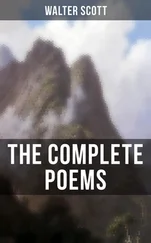line 61. Holt, an Anglo-Saxon word for wood or grove, has been a favourite with poet’s since Chaucer’s employment of it (Prol. 6):-
‘Whan Zephirus eek with his swete breethe
Enspired hath in every holte and heethe
The tendre croppes.’
See Dr. Morris’s Glossary to Chaucer’s Prologue, &c. (Clarendon Press).
line 68. Cp. Wordsworth’s two Matthew poems, ‘The Two April Mornings’ and ‘The Fountain’; also Matthew Arnold’s ‘Thyrsis’-
‘Too rare, too rare grow now my visits here!
But once I knew each field, each flower, each stick;
And with the country-folk acquaintance made
By barn in threshing-time, by new-built rick,
Here, too, our shepherd-pipes we first assay’d.’
line 82. Janet in the ballad of ‘The Young Tamlane’ in the Border Minstrelsy. The dissertation Scott prefixed to this ballad is most interesting and valuable.
line 84. See above, note on Rev. J. Marriott.
line 85. Scott was sheriff-substitute of Selkirkshire. As the law requires residence within the limits of the sheriffdom, Scott dwelt at Ashestiel at least four months of every year. Prof. Veitch, in his descriptive poem ‘The Tweed,’ writes warmly on Ashestiel, as Scott’s residence in his happiest time:-
‘Sweet Ashestiel! that peers ‘mid woody braes,
And lists the ripple of Glenkinnon’s rill-
Fair girdled by Tweed’s ampler gleaming wave-
His well loved home of early happy days,
Ere noon of Fame, and ere dark Ruin’s eve,
When life lay unrevealed, with hopeful thrill
Of all that might be in the reach of powers
Whose very flow was a continued joy-
Strong-rushing as the dawn, and fresh and fair
In outcome as that morning of the world,
Which gilded all his kindled fancy’s dream!’
line 88. Harriet, Countess of Dalkeith, afterwards Duchess of Buccleuch. A suggestion of hers led to the composition of the ‘Lay of the Last Minstrel.’ See Prof. Minto’s Introduction to Clarendon Press edition of the poem, p. 8.
lines 90-93. ‘These lines were not in the original MS.’-LOCKHART.
line 106. ‘The late Alexander Pringle, Esq., of Whytbank-whose beautiful seat of the Yair stands on the Tweed, about two miles below Ashestiel.’-LOCKHART.
line 108. ‘The sons of Mr. Pringle of Whytbank.’-LOCKHART.
line 113. Cp. VI. 611, below.
line 115. ‘There is, on a high mountainous ridge above the farm of Ashestiel, a fosse called Wallace’s Trench.’-SCOTT.
line 124. Cp. Gray’s ‘Ode on a Distant Prospect of Eton College,’ especially lines 6l-2:-
‘These shall the fury Passions tear,
The vultures of the mind.’
lines 126-33. Cp. Wordsworth variously, particularly in the Matthew poems, the Ode on Intimations of Immortality, and Tintern Abbey, especially in its last twenty-five lines:-
‘Therefore let the moon
Shine on thee in thy solitary walk,’ &c.
line 143. Cp. I Kings xix. 12.
lines 147-73. ‘This beautiful sheet of water forms the reservoir from which the Yarrow takes its source. It is connected with a smaller lake, called the Loch of the Lowes, and surrounded by mountains. In the winter, it is still frequented by flights of wild swans; hence my friend Mr. Wordsworth’s lines:-
“The swan on sweet St. Mary’s lake
Floats double, swan and shadow.”
Near the lower extremity of the lake are the ruins of Dryhope tower, the birth-place of Mary Scott, daughter of Philip Scott of Dryhope, and famous by the traditional name of the Flower of Yarrow. She was married to Walter Scott of Harden, no less renowned for his depredations than his bride for her beauty. Her romantic appellation was, in latter days, with equal justice, conferred on Miss Mary Lilias Scott, the last of the elder branch of the Harden family. The author well remembers the talent and spirit of the latter Flower of Yarrow, though age had then injured the charms which procured her the name. The words usually sung to the air of “Tweedside,” beginning “What beauties does Flora disclose,” were composed in her honour.’-SCOTT.
Quoting from memory, Scott gives ‘sweet’ for still in Wordsworth’s lines. Mr. Aubrey de Vere, in ‘Essays Chiefly on Poetry,’ ii. 277, reports an interview with Wordsworth, in which the poet, referring to St. Mary’s Lake, says: ‘The scene when I saw it, with its still and dim lake, under the dusky hills, was one of utter loneliness; there was one swan, and one only, stemming the water, and the pathetic loneliness of the region gave importance to the one companion of that swan-its own white image in the water.’ For a criticism, deeply sympathetic and appreciative, of Scott’s description of St. Mary’s Loch in calm, see Prof. Veitch’s ‘Feeling for Nature in Scottish Poetry,’ ii. 196. The scene remains very much what it was in Scott’s time, ‘notwithstanding that the hand of the Philistine,’ says Prof. Veitch, ‘has set along the north shore of St. Mary’s, as far as his power extended, a strip of planting.’
line 177. ‘The chapel of St. Mary of the Lowes { de lacubus } was situated on the eastern side of the lake, to which it gives name. It was injured by the clan of Scott, in a feud with the Cranstouns; but continued to be a place of worship during the seventeenth century. The vestiges of the building can now scarcely be traced; but the burial-ground is still used as a cemetery. A funeral, in a spot so very retired, has an uncommonly striking effect. The vestiges of the chaplain’s house are yet visible. Being in a high situation, it commanded a full view of the lake, with the opposite mountain of Bourhope, belonging, with the lake itself, to Lord Napier. On the left hand is the tower of Dryhope, mentioned in a preceding note.’-SCOTT.
line 187. See ‘Il Penseroso,’ line 167.
line 197. Cp. Thomson’s ‘Winter,’ line 66:-
‘Along the woods, along the moorish fens,
Sighs the sad genius of the coming storm;
And up among the loose disjointed cliffs,
And fractured mountains wild, the brawling brook
And cave, presageful, send a hollow moan,
Resounding long in listening fancy’s ear.’
line 204. ‘At one corner of the burial-ground of the demolished chapel, but without its precincts, is a small mound, called Binrams Corse , where tradition deposits the remains of a necromantic priest, the former tenant of the chaplainry. His story much resembles that of Ambrosio in “The Monk,” and has been made the theme of a ballad by my friend Mr. James Hogg, more poetically designed the Ettrick Shepherd . To his volume, entitled “The Mountain Bard,” which contains this, and many other legendary stories and ballads of great merit, I refer the curious reader.’-SCOTT.
line 239. ‘Loch-skene is a mountain lake, of considerable size, at the head of the Moffat-water. The character of the scenery is uncommonly savage; and the earn, or Scottish eagle, has, for many ages, built its nest yearly upon an islet in the lake. Loch-skene discharges itself into a brook, which, after a short and precipitate course, falls from a cataract of immense height and gloomy grandeur, called, from its appearance, the “Grey Mare’s Tail.” The “Giant’s Grave,” afterwards mentioned, is a sort of trench, which bears that name, a little way from the foot of the cataract. It has the appearance of a battery designed to command the pass.’-SCOTT.
Читать дальше






